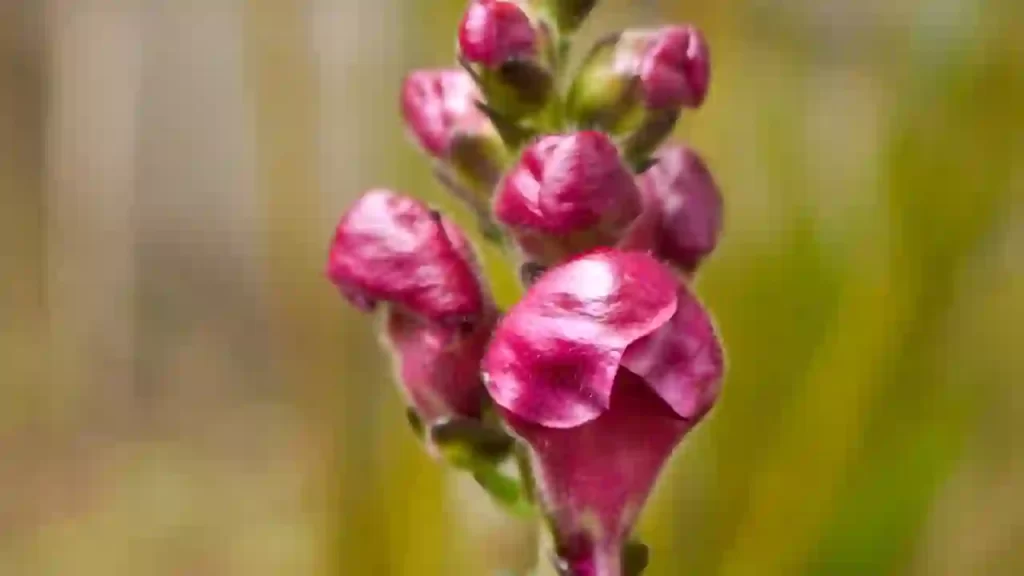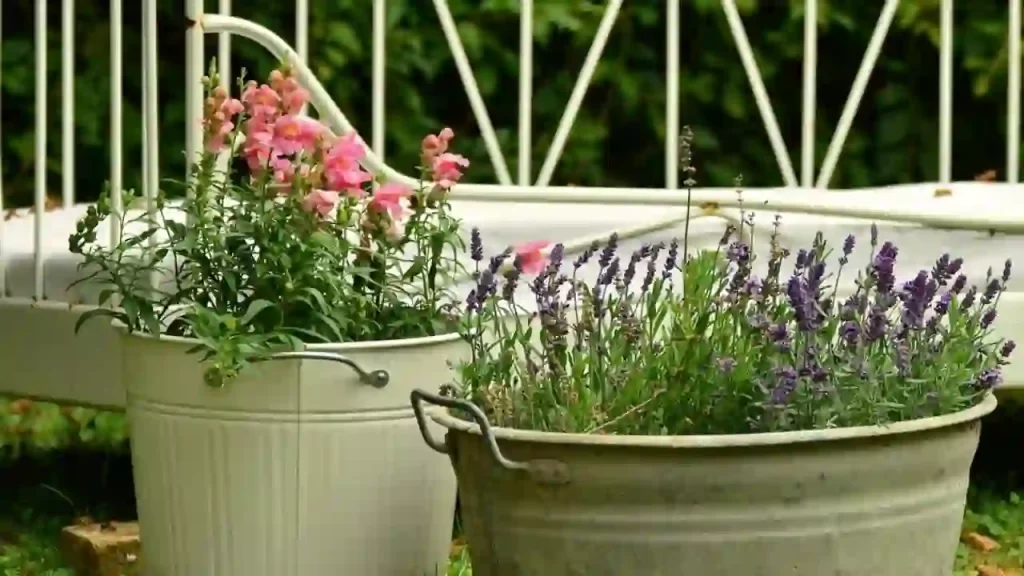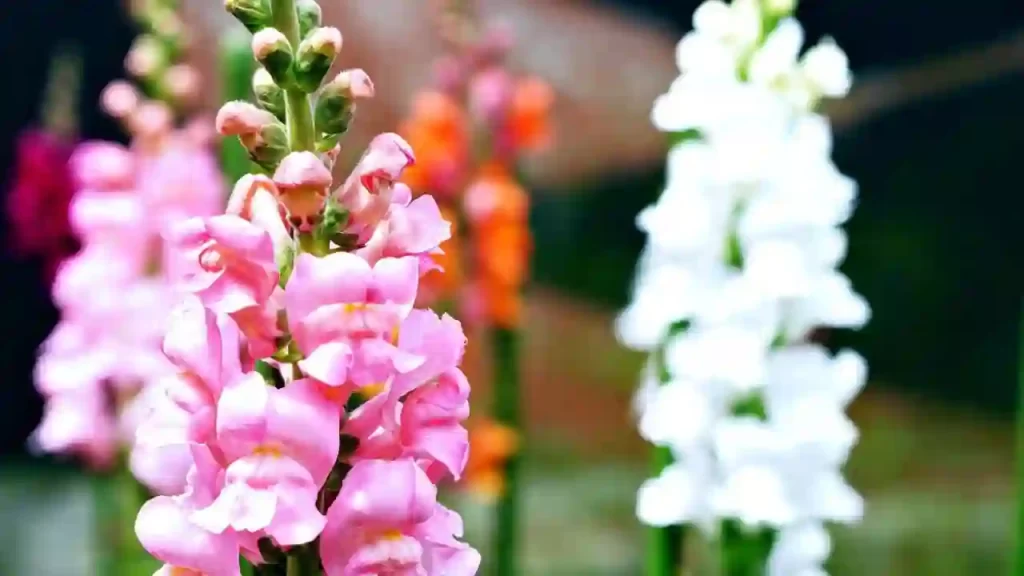Although they can work as indoor plants, that’s not really what people have in mind when they’re planting snapdragons. Outdoors in a flowerbed is where they shine best, but can they survive the summer? Do snapdragons like full sun exposure?
Snapdragons thrive better when they get six hours of full sun daily. However, they might need partial shade during excessively sunny days, especially if the temperature exceeds 75°F.
Don’t let all that scare you. In this post, we go over all you need to know about snapdragons’ sunlight needs. Let’s dig in!
How Many Hours of Sun Do Snapdragons Need?

To get the best bloom out of a snapdragon, you need to give it 6-8 hours of direct sunlight each day. To balance this, aim for morning shade and afternoon sun.
Of course, that’s assuming that you’re planting them in their preferred climate range. They work best in USDA zones 7-11. Snapdragons in hotter regions might need more shade and vice versa.
The reason why adjusting the sunlight exposure is such a crucial aspect here is that it makes a world of difference in the bloom.
Snapdragons have some of the prettiest flowers you’ll ever see, but that’s all gone if they don’t get enough sunlight. Moreover, insufficient sun time can increase the risk of mildew.
On the other hand, excessive sun time can cause the foliage to burn at the tips. It can also cause the flower to wilt and lose its luster.
Where Can You Place Snapdragons?
To maintain the delicate balance between sun and shade, you need to think about the place you choose for your snapdragons.
Antirrhinum snapdragons can grow both potted and unpotted. This means that you can either grow them indoors or outdoors, provided that you cover the plant’s requirements.
Let’s take a closer look:
Outdoor Snapdragons Sunlight Needs

Generally, the best place to keep your antirrhinum flowers should be one with morning shade and afternoon sun. This could be either a flower bed or a stand-alone planter.
All in all, going for potted snapdragons might save you a bit of a hassle. This way, it’s easier to move them around if you notice that there’s something wrong with their sun exposure.
If you want to protect your snapdragons from intense sunlight, you can either set up a wooden garden shade or place it next to a taller tree.
Just make sure that whatever shade you use doesn’t restrict the air circulation around the flower bed. A fresh breeze can make all the difference with these pretty blooms. It keeps the fungus and mildew away.
That’s also why we recommend that you keep each plant at least six inches apart. Interestingly, whenever snapdragons self-seed, they space themselves out at just the right distance.
Indoor Snapdragons Sunlight Needs – Can They Grow in Indirect Sunlight?
You can opt to keep it indoors as long as you keep the sunlight needs in mind. For one, you can choose to place them near a window that receives a lot of noon sun.
If you notice that it’s not enough, investing in a houseplant grow light might be a good final resort.
Plus, you’ll still need to provide an efficient degree of soil drainage and the spacing inside the pot. A little tip to go by here is to look beyond the aesthetic.
For instance, terracotta pots can look stunning, but not all of them have good drainage. Look for something with small holes drilled into the bottom, and keep a saucer underneath to avoid making a mess.
When you’re picking the planter size, remember that you need to leave a decent space in between. That’s why it might be better to avoid clustering up snapdragons in one container.
Finally, try and place your indoor pot somewhere slightly cooler at 70°F for the day and 40°F for the nighttime. This boosts the blooming vitality.
Do Snapdragons Survive the Winter?

Now that you know how much sunlight is crucial for a snapdragon’s growth, you might be wondering how they can make it through the winter.
The good news is that wintering those beauties is a breeze!
Because of their sun-loving behavior, it can be hard to imagine snapdragons as cold-hardy plants. Yet, they can even hold their ground in the face of sub-freezing temperatures.
Remember that cold weather doesn’t necessarily mean cloudy.
However, you’ll want to make sure that they’re well established to boost their winter hardiness. Mostly, spring is a good time to seed them. If you live in colder regions, aim to plant around September.
Throughout the winter, adding a layer of pine straw mulch can help protect the roots from a nasty frost burn.
Once the spring rolls back in, use an all-purpose 20-20-20 fertilizer. Those have an equal 20% concentration of nitrogen, phosphorus, and potassium, which is just enough to revive the plant.
What Else Can Affect a Snapdragon’s Bloom?
Sunlight is usually a common cause of headaches when you’re growing snapdragons. However, if you’re still struggling with the bloom despite giving it the right sun time, you might want to move on to other potential culprits.
Mildew and Fungus
Both downy mildew and verticillium fungus can cause wilt. They can clog up the water supply systems, killing the plant from the inside out.
If you’re outside the ideal USDA zones and you’re growing the snapdragons as annuals, you have a bit of an edge here.
You can simply wait the bloom season out, increase the watering frequency, and let the infection take its course. Later on, get rid of the whole infected mess; root, soil, and all.
Underwatering
Underwatering is a common reason for subpar bloom, especially for plants that spend hours and hours in direct sunlight.
You’ll know that your snapdragon is thirsty if it loses its turgor. If that’s the case, keep the top two inches of soil moist all the time. If it’s a potted plant, you might need to water it daily.
Missed Pinching
Pinching back, or removing the top parts of the plant, encourages further growth. This sounds counterproductive, but it can have a significant impact on bloom vitality.
Ideally, you do this after establishing the plant. If the window for pinching has already passed, wait for the bloom and harvest a sizable portion of the central stem.
Just keep in mind that there isn’t much that a pinch could do till you fix the snapdragon’s sunlight-shade balance. After all, snapdragons need a healthy dose of sunshine!
What Happens if Snapdragons Don’t Get Enough Sun?
Snapdragons are known as short living plant but if you take proper care of them they can bloom in summer as well in autumn.
They need at least 6 hours of sun per day so in case you keep them in shade make sure they get enough sun to bloom.
Lack of sunlight will cause few blooms whereas too much sun burns their leaves from the edges.
Can Snapdragons Get Too Much Sun?
Snapdragons are not resistant to too much sun. Too much sun leads to the burn in leaves and therefore a proper sunlight is required for more blooms.
Keep them in shade in summer and put them to sun in winter to get more blooms from them.
Can snapdragons tolerate full sun and heat?
I have seen snapgragons blooming perfectly in partial sun in summer and even in shade. When the heat becomes intolerable for them they stops blooming.
To help them blooming profusely, keep them in partial shade and water them frequently to survive in summer and bloom again in fall.
Are Snapdragons perennial?
Snapdragons can be annuals as well as perennials. Some snapdragons varieties are pure annuals and they grow, flower, and die in single growing season.
However, there are other varieties of snapdragons that are perennials and they survive winter and grow again in spring from the same seeds.
Summary – Snapdragon Sunlight Requirements
Snapdragons are beautiful and versatile flowers that can add color to any garden. They prefer full sun but can also tolerate partial shade.
Keep an eye on your snapdragons in hot weather, as they may need some afternoon shade to prevent wilting. With proper care, snapdragons will flower in spring and fall.
Recent Posts
Are you ready to plant tomatoes for the best tomato harvest of your life? It all starts with getting the fertilizer right! Fertilizing tomatoes can seem daunting, but when done correctly, it’s...
9 Reasons Why Your Tomato Plants Wilting and How To Fix This!
When the gardeners see their lovely and precious tomato plants wilted, they become hopeless, sad, and impatient. But the situation can often be reversed with proper care and adopting a few good...
